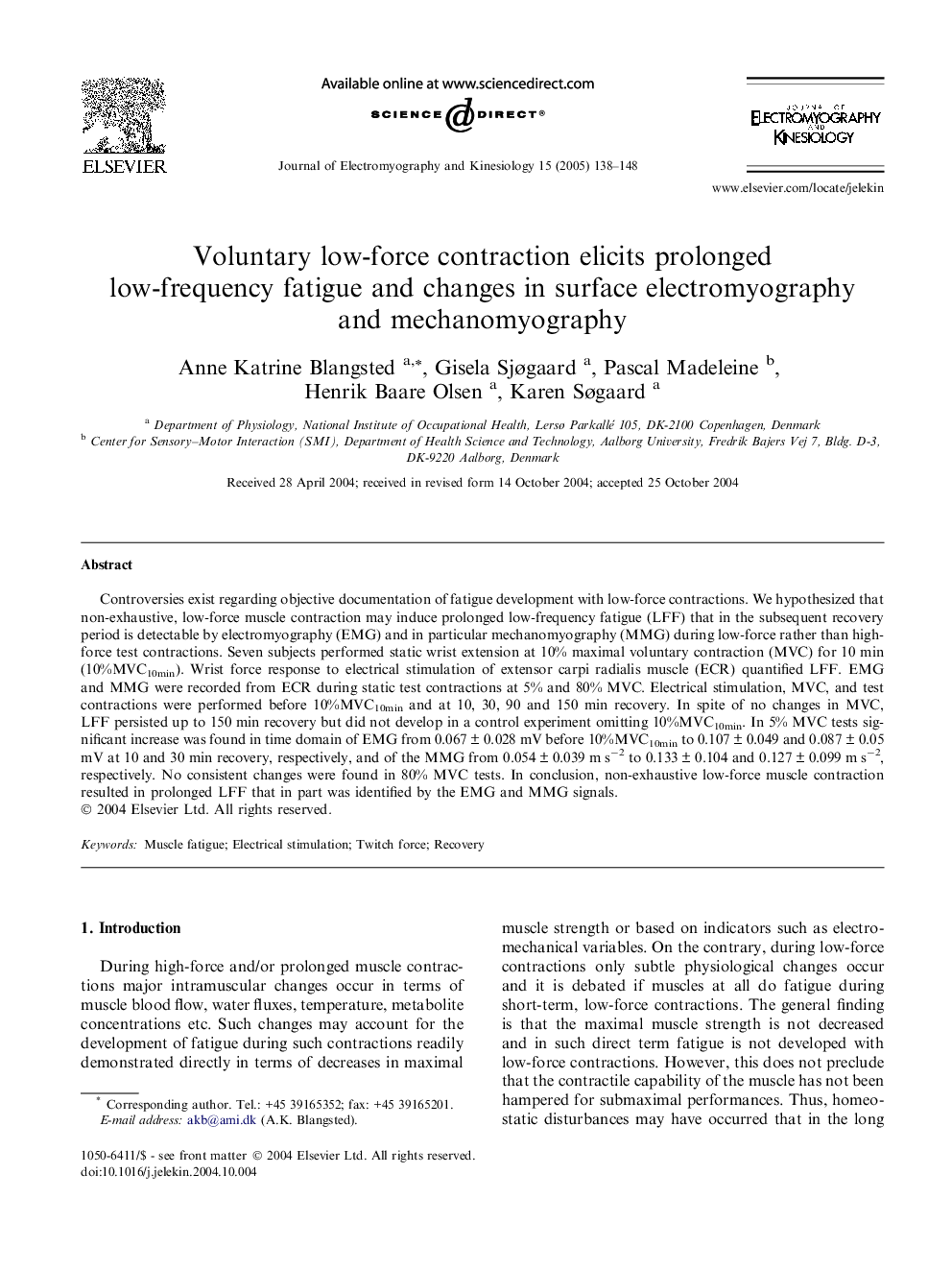| Article ID | Journal | Published Year | Pages | File Type |
|---|---|---|---|---|
| 9353604 | Journal of Electromyography and Kinesiology | 2005 | 11 Pages |
Abstract
Controversies exist regarding objective documentation of fatigue development with low-force contractions. We hypothesized that non-exhaustive, low-force muscle contraction may induce prolonged low-frequency fatigue (LFF) that in the subsequent recovery period is detectable by electromyography (EMG) and in particular mechanomyography (MMG) during low-force rather than high-force test contractions. Seven subjects performed static wrist extension at 10% maximal voluntary contraction (MVC) for 10 min (10%MVC10min). Wrist force response to electrical stimulation of extensor carpi radialis muscle (ECR) quantified LFF. EMG and MMG were recorded from ECR during static test contractions at 5% and 80% MVC. Electrical stimulation, MVC, and test contractions were performed before 10%MVC10min and at 10, 30, 90 and 150 min recovery. In spite of no changes in MVC, LFF persisted up to 150 min recovery but did not develop in a control experiment omitting 10%MVC10min. In 5% MVC tests significant increase was found in time domain of EMG from 0.067 ± 0.028 mV before 10%MVC10min to 0.107 ± 0.049 and 0.087 ± 0.05 mV at 10 and 30 min recovery, respectively, and of the MMG from 0.054 ± 0.039 m sâ2 to 0.133 ± 0.104 and 0.127 ± 0.099 m sâ2, respectively. No consistent changes were found in 80% MVC tests. In conclusion, non-exhaustive low-force muscle contraction resulted in prolonged LFF that in part was identified by the EMG and MMG signals.
Related Topics
Health Sciences
Medicine and Dentistry
Orthopedics, Sports Medicine and Rehabilitation
Authors
Anne Katrine Blangsted, Gisela Sjøgaard, Pascal Madeleine, Henrik Baare Olsen, Karen Søgaard,
